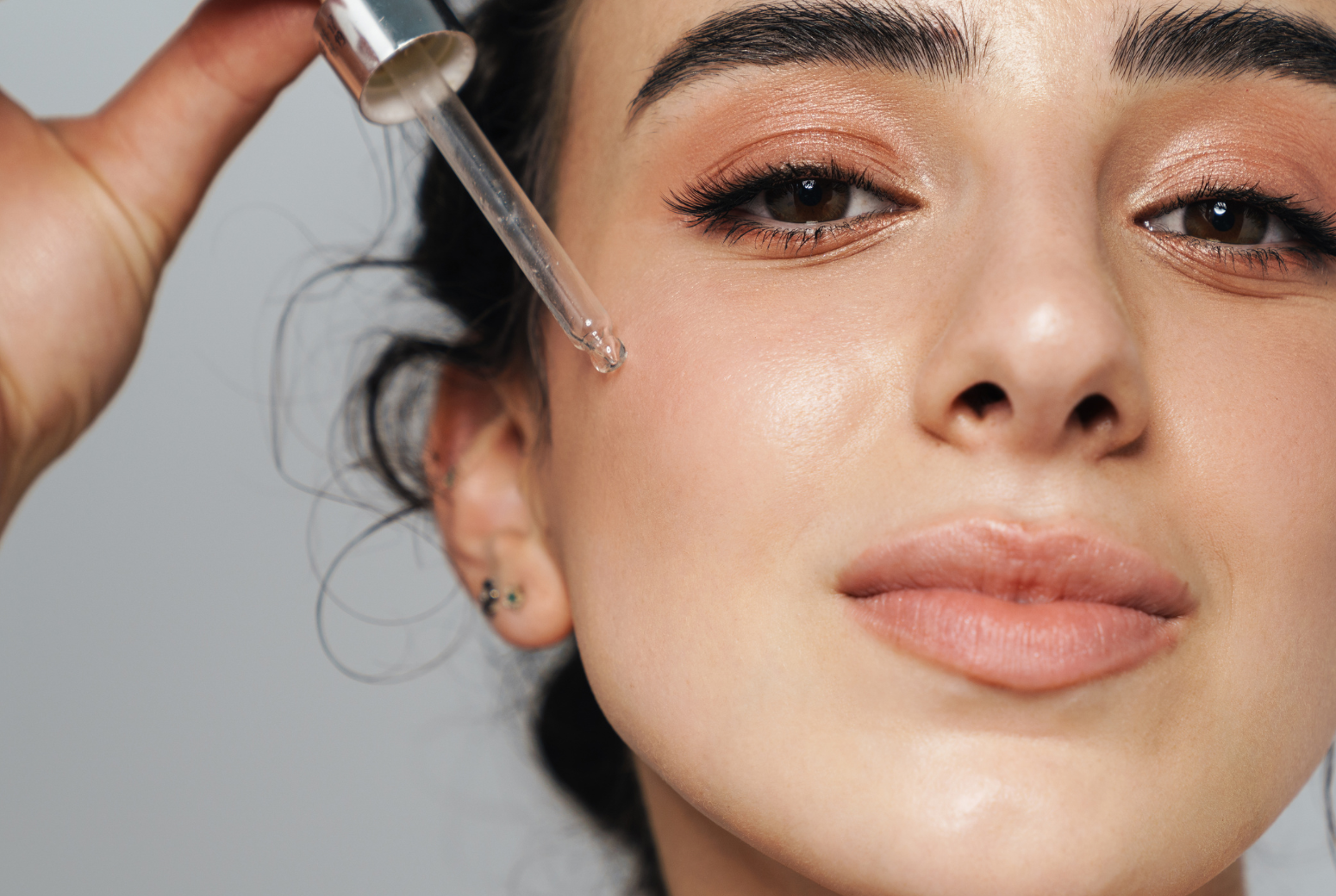In the last two decades, the convergence of botanical science and dermatology has transitioned from folklore into evidence-based therapeutics. No longer confined to traditional medicine, bioactive skincare ingredients derived from botanicals are now recognized for their diverse compounds that target skin health at the molecular level. In this article, we explore the functional impact of plant-based constituents—particularly antioxidants, anti-inflammatories, and antimicrobial agents—and examine key species like Magnolia officinalis, Rosa canina (rosehip), and Camellia sinensis (green tea), each backed by robust scientific data.

April 2025 L+A Report
Tech-Nature: The Evolution of Botanicals in Modern Skincare
Elevate Patient Outcomes with the Power of Plant Science. Today’s botanicals aren’t just “natural”—they’re next-level. With advancements in formulation technology, time-honored plant ingredients are now precision-engineered to deliver measurable results in even the most advanced treatment protocols.
Want to help your patients achieve their skincare goals with gentler, highly effective solutions? Discover how modern science is enhancing botanical extracts to target inflammation, oxidative stress, and barrier repair—without compromising efficacy.
The Molecular Arsenal of Bioactive Skincare Ingredients
Botanicals are biochemical powerhouses. Plants have evolved an array of secondary metabolites to defend themselves against UV radiation, pathogens, and environmental stressors—compounds that incidentally benefit human skin. These bioactive skincare ingredients include:
- Polyphenols (flavonoids, phenolic acids, tannins): Antioxidant, anti-inflammatory, and antimicrobial actions.
- Lignans: Anti-inflammatory and cytotoxic effects with growing evidence in acne and oncology applications.
- Carotenoids: Photoprotective and antioxidant functions, critical for collagen preservation.
- Vitamins (A, C, E, K): Cofactors in skin repair, barrier maintenance, and collagen synthesis.
- Triterpenoids & Alkaloids: Bioactives known for antimicrobial and wound healing properties.
Each of these groups contributes to skin homeostasis by mitigating oxidative stress, supporting dermal architecture, and modulating immune responses.

Contribution by Jacine Drummond
Jacine is the award-winning cosmetic chemist and visionary founder of Roccoco Botanicals, a brand redefining how we treat acne and sensitive skin. Her passion was sparked by her personal battle with cystic acne beginning at age 14, a journey marked by countless failed treatments. Driven by frustration, she pursued postgraduate studies in cosmetic chemistry, uncovering that most acne products were not formulated to truly support compromised skin.
Her commitment deepened when her own children faced skin challenges—her son with eczema and her daughter with cystic acne—solidifying her mission to create skin-loving solutions where the market had fallen short. With over two decades as a beauty therapist and chemist, Jacine has become an industry innovator, winning multiple international awards and earning global recognition. Today, she leads Roccoco Botanicals at the forefront of skincare science, dedicated to developing bioactive, effective formulations for those underserved by conventional skincare.
Magnolia officinalis: A Dual-Action Weapon Against Acne
Among the most promising bioactive skincare ingredients for acne treatment is Magnolia officinalis, a species extensively used in Traditional Chinese Medicine and now validated by modern pharmacology. Its bark contains two bioactive lignans—honokiol and magnolol—that demonstrate profound antimicrobial and anti-inflammatory properties.
Antimicrobial Efficacy
Initial investigations employed agar well diffusion assays, establishing honokiol and magnolol as potent inhibitors of diverse microbial species. Notably, their spectrum includes:
- Gram-positive bacteria
- Acid-fast bacteria
- Fungi
- Helicobacter pylori – a bacterium linked to ulcers and gastric cancer
- Propionibacterium acnes (now Cutibacterium acnes) – a central player in acne pathogenesis
These compounds disrupt bacterial membrane integrity, and honokiol’s lipophilic structure enables penetration of bacterial cell walls, making it effective even against Staphylococcus aureus strains resistant to β-lactam antibiotics.
Anti-Inflammatory Action
In the context of acne, inflammation is just as critical as microbial colonisation. Honokiol reduces the expression of pro-inflammatory cytokines, notably TNF-α and IL-8, in cells stimulated by C. acnes. This dual mechanism—antimicrobial and anti-inflammatory—makes Magnolia officinalis a paradigm shift in acne therapy. It doesn’t merely suppress bacterial load; it interrupts the inflammatory cascade driving comedogenesis and pustule formation.
Additionally, Magnolia dealbata, an endangered species from Mexico, also contains honokiol—highlighting the importance of biodiversity conservation for pharmaceutical innovation.
Rosa canina (Rosehip): Antioxidant-Rich Skin Rejuvenator
The vibrant fruits of the Rosa canina plant, known as rosehips, have a long-standing history in European folk medicine. Today, rosehips are appreciated for their complex composition of antioxidants and micronutrients, contributing to skin repair, barrier support, and anti-aging.
Antioxidant Matrix
Rosehips are particularly rich in:
- Phenolic acids: Gallic, ellagic, caffeic, and p-coumaric acids
- Carotenoids: Lycopene, β-carotene, zeaxanthin
- Flavonoids: Including flavan-3-ols
- Vitamins C, E, A, and K
- Tannins and tocopherols
This antioxidant synergy combats oxidative stress, a major driver of skin aging, hyperpigmentation, and inflammation. Reactive oxygen species (ROS) degrade collagen, elastin, and lipids in the epidermal barrier. The polyphenols and carotenoids in rosehips neutralize these radicals, preserving skin structure.
Skin Regeneration and Anti-Inflammatory Effects
High concentrations of vitamin C in rosehips are crucial for:
- Pro-collagen synthesis via activation of prolyl hydroxylase
- Wound healing by supporting fibroblast migration
- Skin lightening by reducing melanin synthesis through tyrosinase inhibition
Phenolic compounds further enhance skin elasticity and reduce fine lines by inhibiting matrix metalloproteinases (MMPs)—enzymes that degrade collagen. Anti-inflammatory benefits also arise from downregulating NF-κB signaling, reducing redness, and irritation in inflammatory dermatoses.
Camellia sinensis (Green Tea): The Polyphenol Powerhouse
Green tea catechins (GTCs), particularly epigallocatechin-3-gallate (EGCG), are among the most studied bioactive skincare ingredients in dermatology. GTCs exhibit multifaceted benefits that range from anti-aging to photoprotection and skin cancer prevention.
Mechanisms of Action
Antioxidant Defense
GTCs scavenge ROS and upregulate endogenous antioxidant enzymes like superoxide dismutase and catalase in keratinocytes.
Anti-Inflammatory Modulation
Catechins inhibit pro-inflammatory cytokines (IL-1β, IL-6, TNF-α) and block MAPK and NF-κB pathways, making them effective in treating chronic inflammatory skin conditions such as eczema and psoriasis.
Photoprotection & DNA Repair
EGCG absorbs UV radiation and activates nucleotide excision repair pathways in UVB-damaged keratinocytes. This confers photoprotective benefits, reducing sunburn and long-term photocarcinogenesis risk.
Wound Healing
Through promoting angiogenesis and fibroblast proliferation, green tea accelerates re-epithelialization and reduces scar formation.
Clinical formulations containing 2–5% EGCG have demonstrated improvements in skin hydration, elasticity, and wrinkle reduction in photodamaged skin over 8–12 weeks.
Bridging Nature and Clinical Efficacy
The evolution of botanical research marks a significant shift in how the beauty and dermatological industries approach skin health. Compounds like honokiol, rosehip polyphenols, and green tea catechins not only outperform synthetic actives in some cases but also align with rising consumer demand for “clean,” sustainable ingredients. However, challenges remain in standardising extraction methods, ensuring bioavailability, and validating long-term safety.
The Future: Synergistic Formulations
Looking forward, the integration of bioactive skincare ingredients into multi-modal skincare—combining antioxidants, anti-inflammatories, and antimicrobials—represents the next frontier. A formulation leveraging:
- Honokiol (1–2%) – as an anti-acne and anti-inflammatory agent
- Rosehip extract (10–15%) – for antioxidant support and collagen stimulation
- EGCG (2–5%) – for UV protection, anti-aging, and inflammation control
would provide a comprehensive approach to acne, aging, and inflammatory skin disorders, grounded in robust molecular pharmacology.
Botanicals are no longer a soft science. Through molecular mapping, high-throughput screening, and translational dermatology, we now understand why and how these compounds work. Honokiol’s antimicrobial precision, rosehip’s antioxidant complexity, and green tea’s gene-modulating capabilities are redefining skincare at a cellular level.
In the pursuit of optimized skin health, nature’s pharmacy offers not only inspiration but clinical-grade efficacy. Harnessing these bioactive skincare ingredients with scientific rigor will shape the next generation of dermatological innovation.
